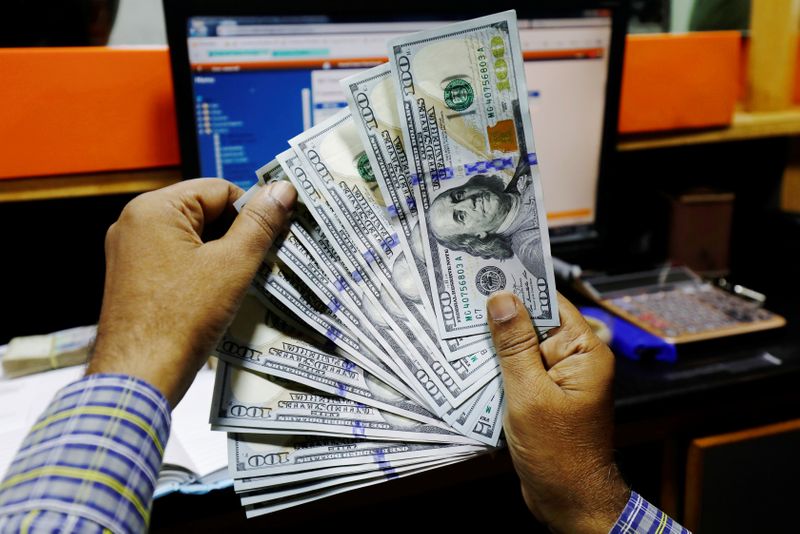By Tom Westbrook
SINGAPORE (Reuters) - The dollar edged toward an almost 2% weekly rise on Friday, boosted by a surge in the oil price and as investors sought safety amid the worsening economic fallout from the coronavirus pandemic.
The gains consolidate the dollar's strength after a topsy-turvy end to last month, which had the dollar soaring in a scramble for cash, then slumping as the U.S. Federal Reserve flooded the market with liquidity.
The largest ever daily gain in crude oil prices helped the greenback to its best day in two weeks against the euro overnight, since the United States is the world's top oil and gas producer.
It held that ground to stand at $1.0838 per euro (EUR=) on Friday - ahead 2.7% for the week. Against a basket of currencies (=USD) the dollar is up 1.8% for the week so far at 100.210, its best performance since mid-March.
Moves in Asian trade were slight since traders are bracing for bad news when monthly U.S. payrolls data is published at 1230 GMT.
The coronavirus pandemic is worsening in the United States and as lockdowns extend, weekly jobless claims already soared to a massive 6.6 million last week.
The dollar was firmer against most other major currencies, last trading at $0.6054 per Australian dollar
It bought 108.00 Japanese yen
"The U.S. labour market has more or less collapsed," said Commonwealth Bank of Australia currency analyst Joe Capurso.
"The increase in the dollar because of the poor U.S. economic data reflects the dollar's status as a counter‑cyclical currency. It lifts when the global economy deteriorates, even if the deterioration in the global economy is the U.S."
CBA forecasts a 200,000 drop in employment, higher than the median estimate of a 100,000 drop according to a Reuters' survey of economists - though like most, they expect far worse to come as the data catches up to the damage in the real economy.
Global coronavirus cases surpassed 1 million on Thursday, with more than 52,000 deaths as the pandemic spread further in the United States and the death toll climbed in Spain and Italy, according to a Reuters tally of official data.
Japanese bank Nomura expects the world economy contracted 18% in the first quarter, on an annualised basis, and is tracking toward shrinking 4% in 2020.
The overnight 21% surge in the price of crude oil futures (LCOc1) to $29.94 gave fleeting support to commodity currencies, especially the oil-exposed Norwegian krone
Flows out of just about every asset in emerging markets in to the dollar continue, with MSCI's emerging market currency index (MIEM00000CUS) sitting not far above three-year lows touched last month. [EMRG/FRX]
"Until the virus peaks, we anticipate the selling pressure will prevail and capital outflows will continue, although the biggest wave may have occurred in March," said Piotr Matys, senior emerging markets FX Strategist at Rabobank in London.
"If a synchronised global recession transforms into depression, then all bets will be off."

Graphic: World FX rates in 2020 https://graphics.reuters.com/GLOBAL-CURRENCIES-PERFORMANCE/0100301V041/index.html